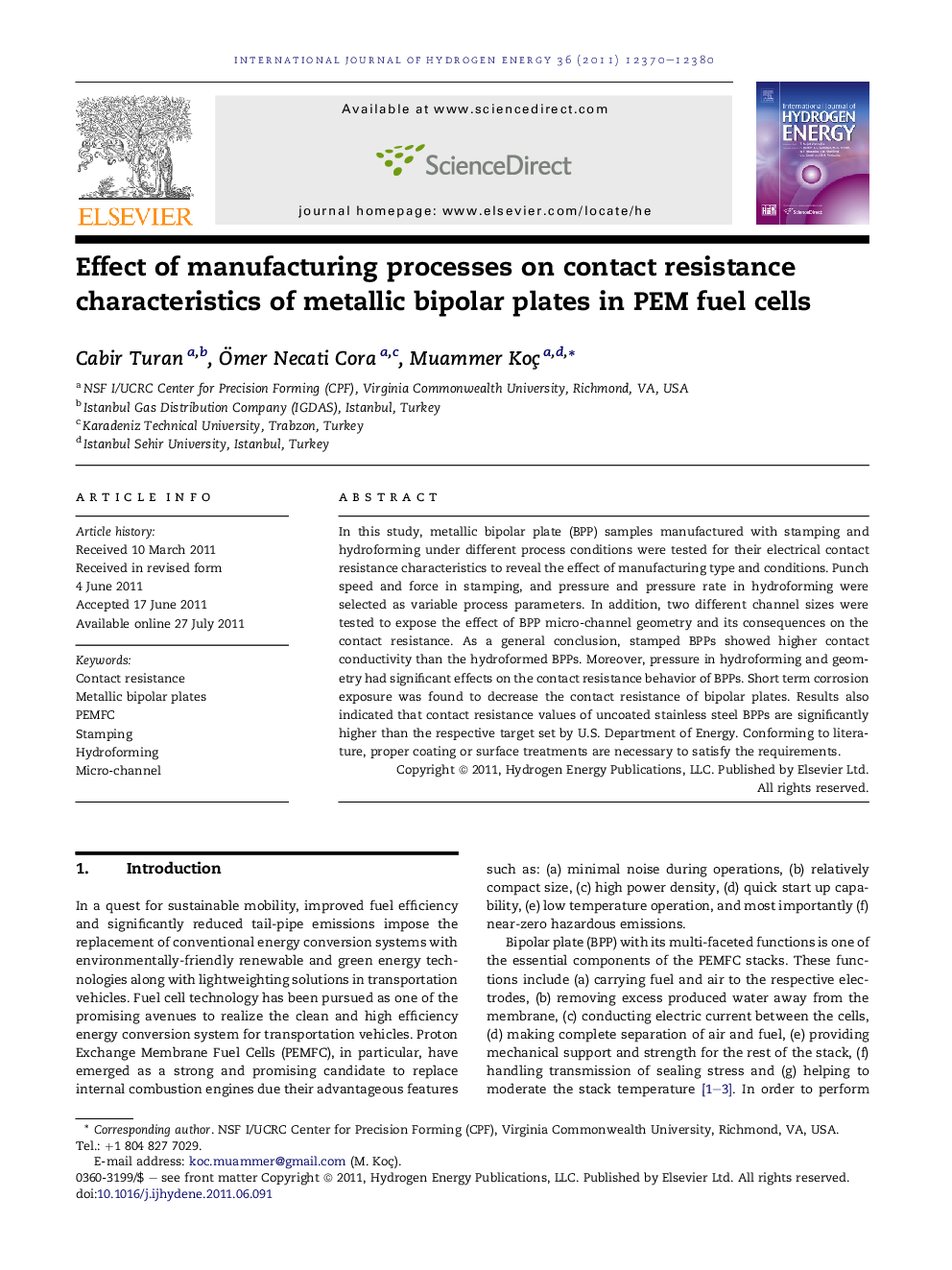| Article ID | Journal | Published Year | Pages | File Type |
|---|---|---|---|---|
| 1282441 | International Journal of Hydrogen Energy | 2011 | 11 Pages |
In this study, metallic bipolar plate (BPP) samples manufactured with stamping and hydroforming under different process conditions were tested for their electrical contact resistance characteristics to reveal the effect of manufacturing type and conditions. Punch speed and force in stamping, and pressure and pressure rate in hydroforming were selected as variable process parameters. In addition, two different channel sizes were tested to expose the effect of BPP micro-channel geometry and its consequences on the contact resistance. As a general conclusion, stamped BPPs showed higher contact conductivity than the hydroformed BPPs. Moreover, pressure in hydroforming and geometry had significant effects on the contact resistance behavior of BPPs. Short term corrosion exposure was found to decrease the contact resistance of bipolar plates. Results also indicated that contact resistance values of uncoated stainless steel BPPs are significantly higher than the respective target set by U.S. Department of Energy. Conforming to literature, proper coating or surface treatments are necessary to satisfy the requirements.
► Metallic bipolar plates were manufactured with stamping and hydroforming. ► Feature size and manufacturing method and parameters affect contact resistance. ► Uncoated stainless steel bipolar plates did not meet contact resistance requirements.
